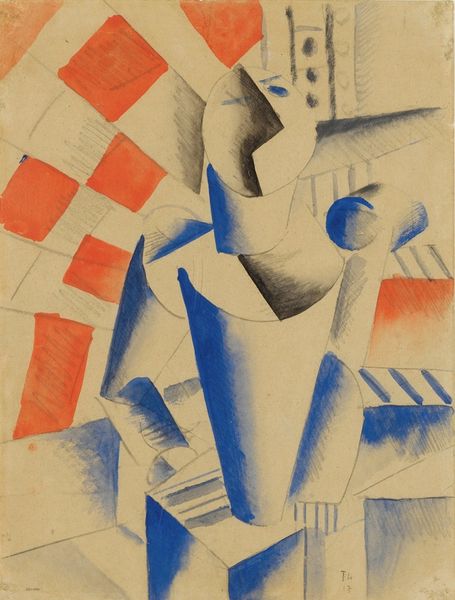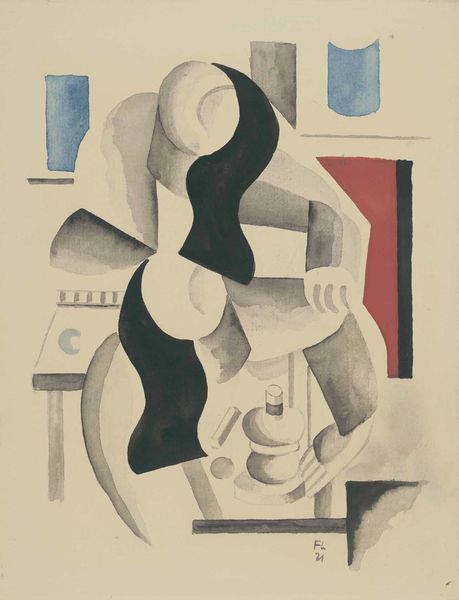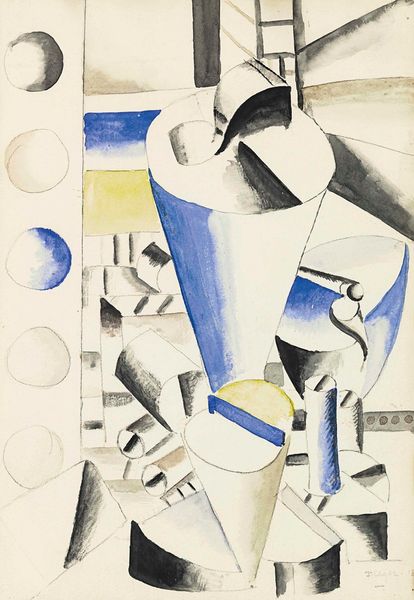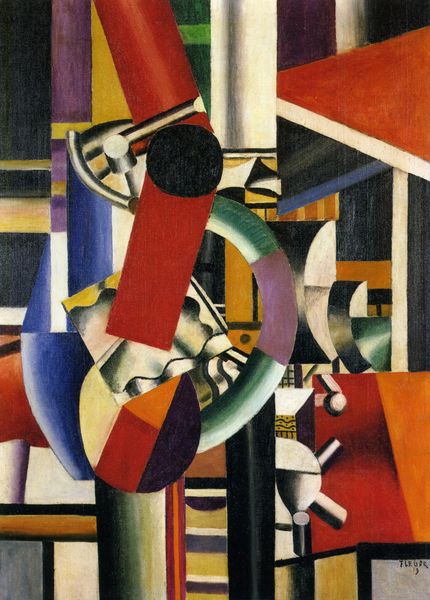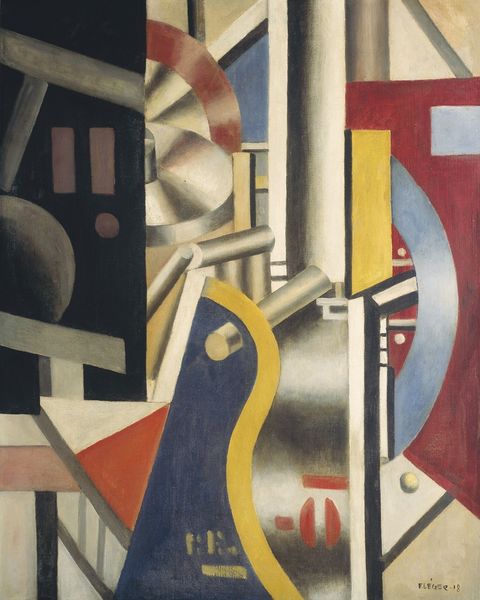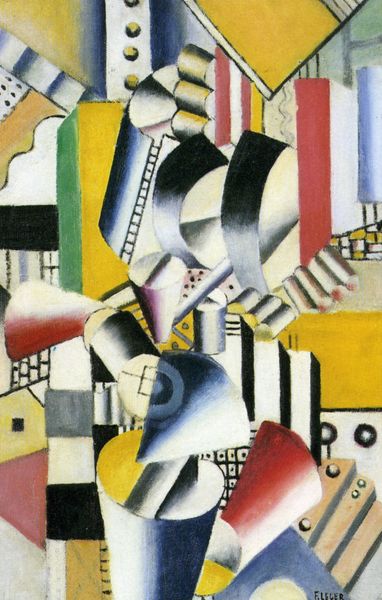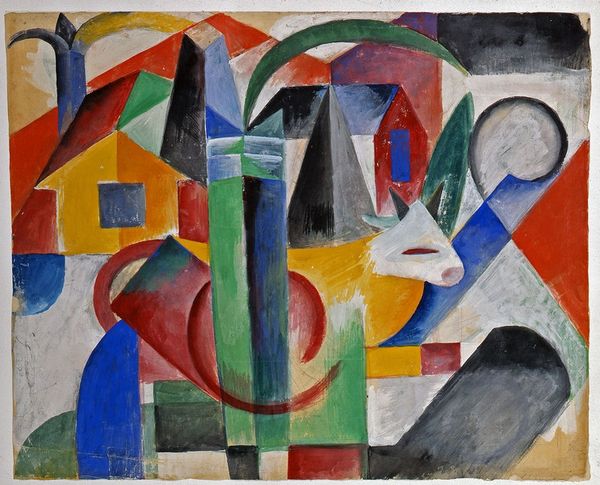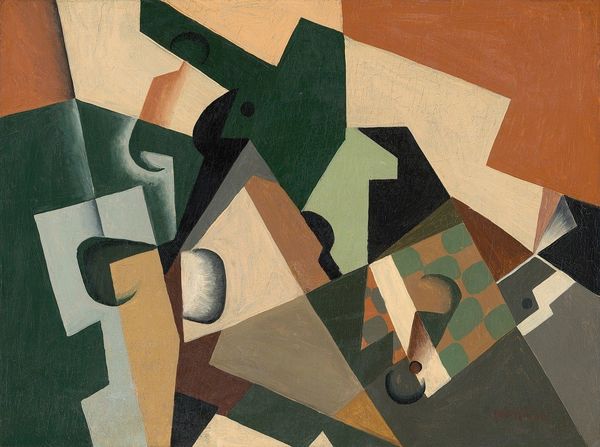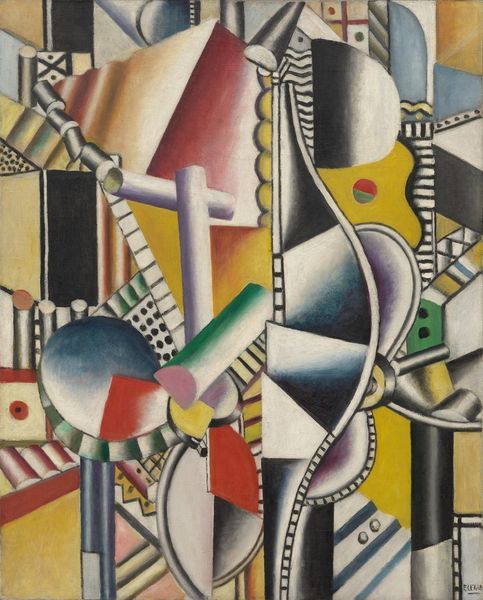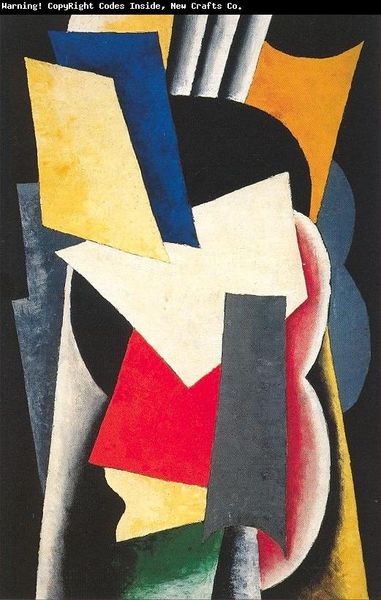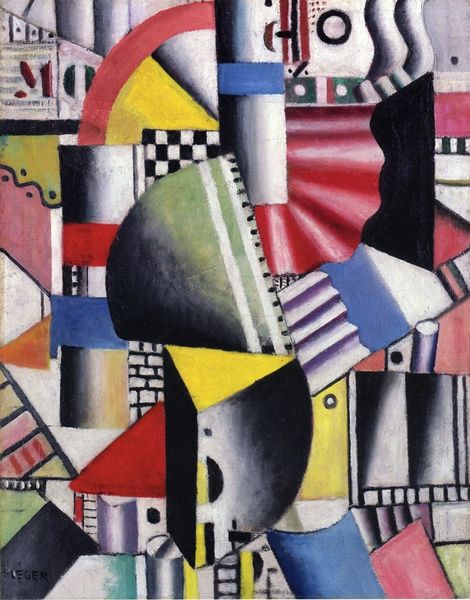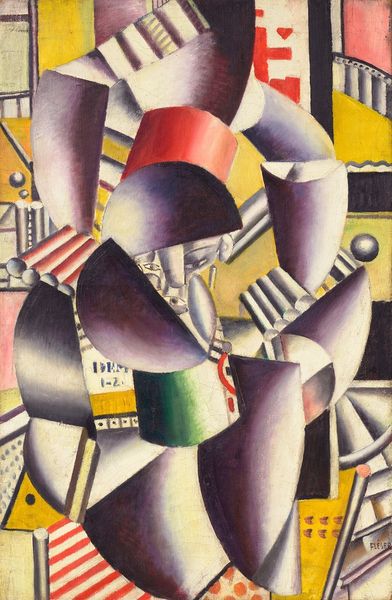
painting, watercolor
#
art-deco
#
cubism
#
painting
#
abstract
#
watercolor
#
coloured pencil
#
geometric
#
geometric-abstraction
#
abstraction
#
line
#
watercolour illustration
Copyright: Modern Artists: Artvee
Editor: Fernand Léger’s "Le Maçon ou Nature morte," painted in 1918 using watercolour, presents this fascinating arrangement of geometric shapes. There's something rigid yet playful about the composition. What do you see in this piece, especially given its historical context? Curator: Léger, during and after the First World War, was deeply engaged with the representation of the working class and the industrial landscape. Can you sense that in this piece? It’s more than just shapes; it’s an exploration of labour, reconstruction, and the human place within this mechanical age. Léger served in the war and witnessed the mechanization of warfare firsthand, how might that influence his perception of labor? Editor: I do see how these sharp, defined forms, rendered in watercolor, can reference both tools and perhaps buildings under construction. It feels like Léger is trying to find harmony or some kind of balance between man and machine. Curator: Precisely! Consider the title: "The Mason," or "Still Life." He's equating the labourer with the still life, imbuing them both with a similar significance. It raises questions about how we value different forms of work, blurring lines between human effort and the objects created. In terms of art history, this fits into an attempt to give prominence and dignity to all works of life, and art making. How can it contribute to breaking established social barriers and preconceptions, if anything? Editor: So, this isn’t just a pretty arrangement of shapes and colours, but rather an exploration of the evolving roles of labour and technology during a time of significant social upheaval. Curator: Exactly! It encourages us to think critically about how industrialisation impacts human experience, social hierarchies, and, ultimately, our understanding of what constitutes "art". Editor: That really opens up the artwork, thank you! Curator: Indeed! Looking closely at the past empowers us to see our present and construct our future with an understanding of our preconceptions.
Comments
No comments
Be the first to comment and join the conversation on the ultimate creative platform.
